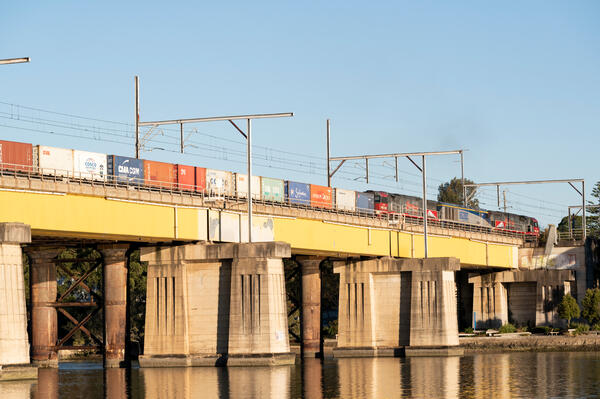
Zero emissions heavy vehicles: Analysis, planning and policy
This research aims to improve our understanding of pathways towards zero emissions for heavy vehicles including the potential technology mix and costs.
The research is being delivered by Swinburne University of Technology in partnership with Department of Transport and Main Roads (Queensland), Department of Transport and Planning (Victoria) and the Department of Infrastructure, Transport, Regional Development, Communications and the Arts.
Background
In 2020, transport produced 18% of Australia’s greenhouse gas emissions, of which trucks and buses accounted for 21%. As part of the Paris Climate Agreement, Australia has committed to reducing its emissions by 43% by 2030 (on 2005 levels) and achieving net- zero emissions by 2050.
For Australia to fulfil its emissions reduction commitments, it is critical to begin decarbonising the transport sector this decade. This project aims to contribute to the transition efforts by analysing the total cost of ownership (TCO) and infrastructure requirements to facilitate the decarbonisation of Australia’s heavy vehicles.
New low and zero-emissions heavy vehicles (LZEHV) are beginning to enter the international markets, with vehicle manufacturing and vehicle trials underway worldwide. For the purposes of this research, LZEHVs refer to low and zero emissions from the tailpipe as opposed to low and zero emissions based on lifecycle analyses.
LZEHV trucks have two main vehicle technology options: battery electric trucks (BETs) and hydrogen fuel cell electric trucks (FCETs). BETs are powered by an in-built battery charged by the electricity grid or onsite solar. FCETs are powered by a fuel cell and a small battery; the fuel cell creates electricity using onboard stored hydrogen.
To date, limited knowledge exists on how individual technologies could benefit Australian consumers and businesses with different range and load requirements – and how costs evolve as technology improves and more vehicles enter the market in the future.
Vastly different infrastructure is required to support BETs compared to FCETs. Fuelling FCETs requires the development of hydrogen production, hydrogen supply chains, and refuellers. The refueller requires compressors and medium-pressure storage, both sized to provide an expected hourly refuelling rate.
Operating BETs along significant freight corridors involves the development of new fast-charging infrastructure and supplying new electricity in some weak network locations. The optimal rollout of refuelling and recharging infrastructure is critical to accelerating transition to low and zero emission vehicles and decarbonising road freight in Australia.
Supply chain configurations are also essential economic factors feeding into the TCO for LZEHVs. Larger stations benefit from substantial economies of scale, which lower costs per kilogram of hydrogen dispensed and offer lower retail hydrogen prices and higher investor returns. However, large stations will not make economic sense until an extensive rollout of zero-emission heavy vehicles occurs.
Why hydrogen and electric ZEHVs and why now?
The cost of renewables has decreased by over 80% over the last decade. According to CSIRO’s latest GenCost study, the cost of solar is expected to fall by a further 50% by 2040. In addition, the global momentum in the hydrogen industry is causing innovations in fuel cells, hydrogen production, storage, and supply chains.
These developments are likely to lead to a massive reduction in hydrogen production and vehicle costs. To achieve the Australian Federal Government’s plan to produce green hydrogen at $2/kg, it would cost about half the amount to refuel a truck with hydrogen compared to diesel.
Similarly, reduction in the cost of solar and improvements in battery technology has further increased the uptake of battery electric vehicles, with several original equipment manufacturers introducing new light passenger and commercial vehicles in Australia and around the globe.
While there is a clearer picture of the future of low and zero-emission light vehicles in the Australian context, there is limited knowledge about such solutions’ prospects and uptake pathways in the heavy vehicle domain.
This proposal aims to bridge this gap in knowledge and address core issues associated with the infrastructure and rollout of ZEHVs in Australia.
Objectives
This project has three focus areas:
- Develop a detailed analysis of the TCO for LZEHVs to help Australian businesses to make informed decisions regarding their future fleet investment, operations and management, and to help policymakers set appropriate subsidies and incentives on the supply and demand side;
- Undertake a geospatial assessment of refueller and electric vehicle charger roadmap for specified use cases; and
- Provide recommendations and policy directions for developing support, based on the outcomes of the TCO and geospatial assessments, as well as recharger and hydrogen production mapping.
Updates
Further updates will be provided as this project progresses.
This research is being delivered in partnership with iMOVE CRC and supported by the Cooperative Research Centres program, an Australian Government initiative.
